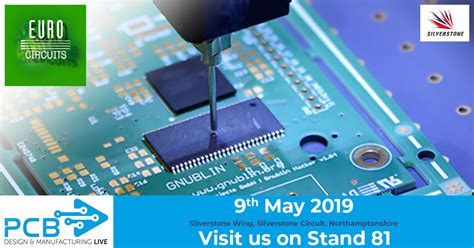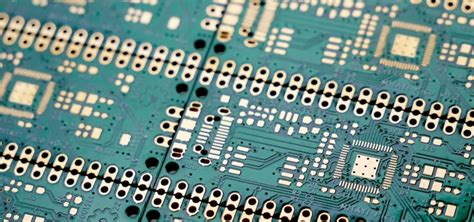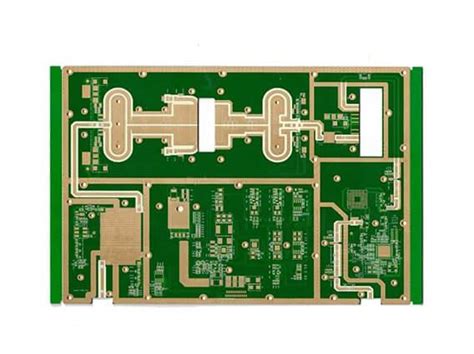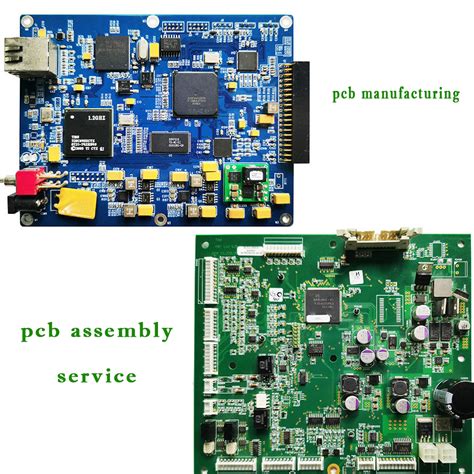Live PCB Design & Manufacturing: Best Practices Guide

Key Takeaways
Effective integration of PCB design and manufacturing requires a strategic approach to real-time data synchronization and process alignment. By adopting live PCB assembly (PCBA) workflows, engineers can reduce prototyping cycles by up to 40%, while maintaining traceability across design iterations. Key considerations include:
| Factor | Traditional Approach | Live Optimization |
|---|---|---|
| Prototyping Time | 5–7 days | 2–3 days |
| Defect Detection Rate | 15–20% post-production | <5% in-process |
| Revision Flexibility | Limited to design freeze | Real-time adjustments |
Prioritizing design for manufacturability (DFM) ensures seamless transitions from schematic capture to PCBA stages. For instance, automated design rule checks (DRCs) minimize compatibility issues during PCB assembly, while thermal management simulations prevent field failures. Additionally, leveraging vendor-agnostic component libraries accelerates procurement without compromising manufacturing timelines.
To optimize live PCB builds, teams should implement closed-loop feedback systems between fabrication partners and design tools. This reduces time-to-market risks by aligning material availability with PCBA requirements. Finally, rigorous in-line testing protocols—such as automated optical inspection (AOI)—ensure quality without disrupting production flow. By balancing agility with precision, organizations can achieve first-pass yield rates exceeding 90% in dynamic manufacturing environments.

Live PCB Design-Production Workflow Strategies
Achieving synchronization between PCB design and manufacturing requires a strategic focus on real-time collaboration tools and iterative feedback loops. Modern workflows leverage advanced CAD software, such as OrCAD X, to enable seamless transitions from schematic capture to physical layout. By integrating design for manufacturability (DFM) checks early in the process, engineers can identify potential issues like component spacing conflicts or thermal mismanagement before prototyping begins.
Central to this approach is the adoption of live data-sharing platforms that connect design teams with PCBA manufacturers. These systems allow instant adjustments to material specifications, layer stack-ups, or solder mask requirements, reducing delays during PCB assembly. For instance, real-time visibility into component availability helps avoid last-minute substitutions that could compromise performance. Additionally, automated design rule validation ensures compliance with manufacturing tolerances, minimizing rework in high-volume production.
To optimize efficiency, many organizations now employ agile prototyping methodologies, where PCB design iterations are tested against PCBA line capabilities in parallel. This bidirectional feedback loop accelerates time-to-market while maintaining rigorous quality benchmarks. Critical metrics, such as signal integrity simulations and thermal profiling, are monitored continuously to align design choices with manufacturing realities—a cornerstone of successful live workflow strategies.

Optimizing Real-Time PCB Manufacturing Processes
Effective PCB assembly relies on synchronized workflows that bridge design intent with production realities. By leveraging real-time data analytics, manufacturers can identify bottlenecks in PCBA lines, such as delayed component procurement or inefficient solder paste application. For instance, integrating IoT-enabled monitoring systems allows instant detection of thermal inconsistencies during reflow soldering, enabling immediate adjustments to prevent defects.
Tip: Establish bidirectional communication between design teams and factory floors to align design-for-manufacturing (DFM) guidelines with live process capabilities.
Advanced tools like automated optical inspection (AOI) and predictive maintenance algorithms further enhance quality control by flagging deviations in PCB assembly before they escalate. To optimize material usage, consider adopting sustainable design practices that minimize waste without compromising performance. For PCBA workflows, balancing speed and precision is critical—prioritize modular fixturing for rapid changeovers and employ dynamic scheduling to accommodate urgent revisions.
Proactive collaboration with component suppliers also mitigates risks like obsolescence or lead-time delays, ensuring seamless transitions from prototyping to mass production. By embedding feedback loops into real-time PCB manufacturing systems, teams can iteratively refine processes while maintaining compliance with industry standards such as IPC-A-610. This approach not only accelerates timelines but also elevates yield rates, positioning manufacturers to meet evolving market demands efficiently.

Efficient Prototyping Techniques for Live PCB Builds
Achieving rapid yet reliable prototyping in live PCB assembly environments requires balancing speed with precision. A foundational strategy involves leveraging modular design principles, allowing engineers to isolate functional blocks for iterative testing without disrupting the entire system. For high-frequency or mixed-signal boards, pre-validated reference designs can slash development cycles by 30–40%.
Integrating simulation-driven workflows is critical, with tools like signal integrity analyzers predicting performance bottlenecks before physical PCBA begins. Real-time collaboration between design and manufacturing teams ensures design-for-manufacturability (DFM) adjustments are implemented dynamically—such as optimizing pad sizes for automated pick-and-place systems.
When prototyping for live PCB builds, prioritize critical path components (e.g., power delivery networks) using rapid-turn fabrication services with 24-hour turnaround guarantees. Concurrently, employ automated optical inspection (AOI) during early-stage PCB assembly to catch soldering defects or misalignments that could escalate costs in volume production.
For hybrid prototypes combining rigid and flexible sections, adopt sequential lamination techniques to validate layer stackup integrity under thermal stress. Transitioning seamlessly from prototyping to full-scale PCBA hinges on maintaining a centralized revision control system, ensuring all stakeholders access the latest Gerber files and bill-of-materials (BOM) updates. This approach minimizes re-spins while aligning with real-time manufacturing feedback loops.
Quality Control Best Practices in PCB Assembly
Implementing rigorous quality control (QC) protocols is critical for ensuring reliability in PCB assembly processes. Modern live manufacturing environments demand real-time monitoring systems to detect defects during PCBA stages, such as solder bridging or component misalignment. Automated optical inspection (AOI) systems paired with X-ray analysis enable non-destructive testing, identifying hidden flaws in high-density interconnects or BGA packages.
A key strategy involves establishing design-for-manufacturability (DFM) checks early in the workflow, aligning PCB design parameters with assembly capabilities to minimize rework. Statistical process control (SPC) tools further enhance consistency by tracking critical metrics like solder paste volume and reflow oven profiles. For mission-critical applications, functional testing under simulated operating conditions validates PCBA performance before final integration.
Transitioning seamlessly from prototyping to volume production requires standardized documentation, including IPC-A-610 compliance reports and material traceability logs. By integrating real-time feedback loops between assembly teams and designers, manufacturers can rapidly address anomalies, reducing downtime and ensuring alignment with evolving project specifications. This proactive approach not only elevates yield rates but also strengthens the foundation for scalable, high-quality PCB assembly workflows.
Expert Tips for Manufacturing Optimization Success
Achieving manufacturing optimization in PCB assembly requires balancing precision with adaptability. Start by aligning design intent with production realities—leveraging tools like design for manufacturability (DFM) principles ensures layouts minimize risks such as component crowding or thermal hotspots. For PCBA workflows, prioritize real-time collaboration between design and production teams to address issues like material availability or tolerance mismatches before prototyping. Integrate automated optical inspection (AOI) systems to streamline defect detection, reducing rework cycles by up to 30%.
A critical yet often overlooked step is optimizing component selection using tools like Cadence’s Live BOM, which dynamically updates part availability and substitutes obsolete items during live design sessions. Additionally, adopt modular testing protocols to validate PCB assembly stages incrementally, preventing cascading failures. For high-volume runs, implement statistical process control (SPC) to monitor variations in solder paste application or placement accuracy. Finally, ensure supply chain transparency by mapping alternative vendors for critical components—this mitigates delays and sustains manufacturing optimization even in dynamic production environments.
Accelerating Production Timelines with Live Design
Integrating PCB assembly considerations directly into the design phase reduces iterative delays and streamlines manufacturing readiness. By implementing concurrent engineering principles, designers can collaborate with PCBA teams in real time to address manufacturability constraints, such as component placement tolerances or thermal management requirements. Advanced tools now enable live design rule checks (DRCs) that automatically flag potential bottlenecks—like insufficient solder mask clearances or impedance mismatches—before prototypes reach the factory floor. For instance, leveraging real-time fault detection methodologies during layout ensures errors are resolved during design iteration, slashing rework cycles by up to 40%.
This approach also accelerates timelines by synchronizing material procurement with design finalization. Automated BOM validation tools cross-reference component availability and lead times, allowing teams to substitute obsolete or delayed parts without halting progress. In live environments, closed-loop feedback from PCB assembly test results further refines designs for high-yield production. For example, adjusting pad geometries based on solder joint analytics from initial PCBA prototypes can prevent tombstoning defects in volume runs. By embedding manufacturing intelligence early, teams compress traditionally sequential stages into parallel workflows, achieving faster time-to-market while maintaining rigorous quality standards.

Mastering PCB Design for Seamless Manufacturing
Achieving seamless integration between PCB design and manufacturing begins with understanding how design choices directly impact production outcomes. A critical focus lies in design for manufacturing (DFM) principles, which ensure layouts align with PCB assembly capabilities. For instance, optimizing component placement to avoid PCBA bottlenecks—such as inadequate spacing for automated pick-and-place machines—reduces rework and delays. Leveraging stack-up symmetry and standardized footprints further minimizes fabrication risks, while adhering to IPC standards guarantees reliability across thermal and mechanical stress points.
Transitioning from design to PCB manufacturing demands collaboration between engineers and fabricators. Real-time feedback loops, such as pre-production design reviews, help identify conflicts like trace width mismatches or via clearance issues early. Tools like ECAD/MCAD integration enable synchronized updates, ensuring mechanical enclosures and electrical layouts remain compatible. Additionally, incorporating testability features (e.g., test points for in-circuit testing) streamlines quality assurance during PCBA stages. By prioritizing manufacturability in the design phase, teams eliminate costly iterations, accelerate time-to-market, and maintain consistency in high-volume production environments.
Real-Time Solutions for PCB Design Challenges
Navigating PCB design challenges in live environments demands adaptive strategies that bridge design intent with manufacturing realities. One critical approach involves leveraging real-time collaboration tools that synchronize design teams with PCBA partners, enabling instant feedback on manufacturability constraints. Advanced simulation software now predicts thermal stress and signal integrity issues during the PCB assembly phase, reducing iterative prototyping. For high-density designs, automated design rule checks (DRC) integrated with fabrication guidelines preempt common errors like insufficient clearance or via misalignment.
Another breakthrough lies in cloud-based platforms that track PCB manufacturing progress in real time, allowing designers to adjust layouts dynamically based on material availability or machine capacity. For instance, sudden shortages in specific substrates can trigger instant design substitutions without halting production. Additionally, AI-driven analytics identify recurring bottlenecks in PCBA workflows, such as solder paste application inconsistencies, enabling corrective actions before mass production.
To address signal interference in complex layouts, engineers employ live impedance matching tools that adjust trace geometries during routing. Pairing these with real-time quality monitoring in PCB assembly lines ensures compliance with tolerances as tight as ±0.1mm. By unifying design agility with manufacturing precision, teams achieve faster time-to-market while maintaining rigorous performance standards.

Conclusion
The integration of PCB design and manufacturing in live environments demands a balance of precision, adaptability, and foresight. By implementing real-time collaboration tools and automated workflows, teams can bridge gaps between design iterations and PCBA execution, ensuring faster turnaround without compromising quality. Critical to this process is the use of predictive analytics to identify potential bottlenecks in PCB assembly, allowing for proactive adjustments during prototyping and scaling phases.
Adopting design-for-manufacturability (DFM) principles from the outset minimizes rework, while rigorous in-process testing safeguards against defects in PCBA stages. Success hinges on aligning design choices with production realities—such as material availability and assembly tolerances—to avoid costly delays. Furthermore, leveraging IoT-enabled monitoring in live manufacturing streams ensures traceability and rapid response to anomalies.
Ultimately, the synergy between PCB design and manufacturing in dynamic settings requires continuous feedback loops and cross-functional expertise. Organizations that prioritize agile methodologies and invest in unified software platforms will not only accelerate timelines but also achieve higher reliability in delivering complex electronics to market.
Frequently Asked Questions
How does real-time monitoring improve PCB assembly quality?
Real-time monitoring integrates sensors and analytics tools during manufacturing stages, enabling immediate detection of defects like solder bridging or component misalignment. This reduces rework cycles and ensures PCBA outputs meet strict quality benchmarks.
What role does PCBA play in prototyping efficiency?
Prototyping relies on iterative testing, and PCBA streamlines this by combining design validation with functional testing. Automated optical inspection (AOI) and in-circuit testing (ICT) tools validate assemblies in live environments, accelerating time-to-market.
Can live design adjustments affect manufacturing timelines?
Yes, but synchronized workflows allow engineers to modify designs without halting production. Cloud-based collaboration tools ensure updated schematics are instantly accessible to PCB assembly teams, minimizing delays.
How do you balance cost and quality in live PCBA workflows?
Prioritize design for manufacturability (DFM) principles, such as standardized component footprints and panelization strategies. Partnering with manufacturers early ensures material choices and process optimizations align with both budget and performance goals.
What are common pitfalls in real-time PCB assembly coordination?
Inadequate communication between design and production teams often leads to mismatched specifications. Implementing unified project management platforms and real-time feedback loops mitigates this risk.
Ready to Optimize Your PCB Production Process?
Explore advanced PCB assembly solutions tailored for live design-manufacturing integration. Click here to learn how our expertise can streamline your workflow.







